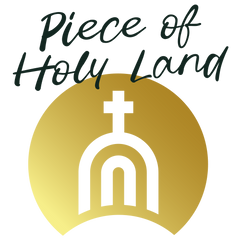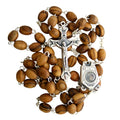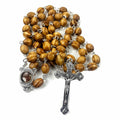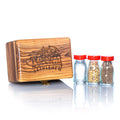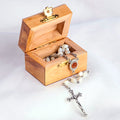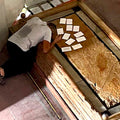The Chapel of the Shepherds' Field - Bethlehem’s Sacred Landmark
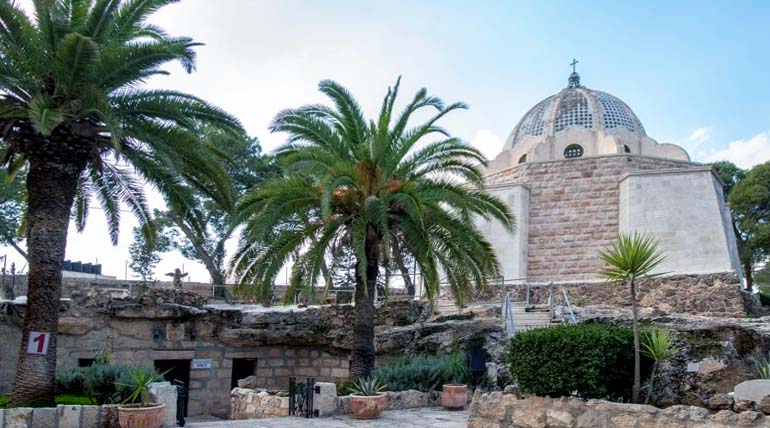
Unveiling the History, Architecture, and Spiritual Legacy of Beit Sahour’s Iconic Chapel
A Holy Landmark in Beit Sahour
In the serene town of Beit Sahour, near the heart of Bethlehem, stands the Chapel of the Shepherds' Field, a site that intertwines history, spirituality, and artistry. This sacred landmark commemorates the angelic proclamation of Jesus’ birth to shepherds as recorded in Luke 2:8-14: “And there were shepherds living out in the fields nearby, keeping watch over their flocks at night. An angel of the Lord appeared to them…”
The chapel serves as both a historical and spiritual gateway, inviting visitors to step into a world where divine revelation and human humility converge. Its significance extends beyond its physical structure, offering a deeply contemplative experience that connects pilgrims to the joy and wonder of the Nativity story. Visitors are often moved by the tranquil beauty of its surroundings, which seem to echo the peaceful yet profound moments of the shepherds’ encounter with the angelic hosts.
Historical Background: Preserving a Sacred Legacy
The Shepherds' Field holds a revered place in Christian tradition, with its association dating back to the earliest centuries of the faith. It has long been identified as the location where angels heralded the birth of Christ, marking it as a site of immense spiritual importance. Early pilgrims who visited the area described it as a place of divine encounter, transforming it into a focal point of Christian veneration.

The current chapel, constructed in 1953, replaced earlier commemorative structures that had been erected to honor the site. Designed by Antonio Barluzzi, an Italian architect celebrated as the "Architect of the Holy Land," the building reflects a harmonious blend of simplicity and grandeur. Its design evokes the humble yet awe-inspiring nature of the Nativity story.
Today, the Chapel of the Shepherds’ Field is a Roman Catholic church, serving as a vital place of worship and reflection for Christian pilgrims. Its architecture and design often incorporate elements like Latin Crosses, symbolizing the global unity of the Roman Catholic faith. Visitors frequently see these crosses as reminders of the Church's enduring mission to preserve the sacred traditions of the Holy Land.
Architectural Mastery: A Symbolic Design
The Chapel of the Shepherds’ Field is a masterpiece of symbolic architecture, thoughtfully crafted to immerse visitors in the pastoral imagery of the Nativity. Its circular design, reminiscent of a shepherd’s tent, draws a connection to the simplicity and authenticity of the shepherds’ lives, grounding the sacred story in its historical and cultural context.


The chapel’s dome is adorned with celestial motifs, including angels and stars, guiding the viewer’s gaze upward to reflect on the heavenly proclamation of Christ’s birth. Every element of the interior contributes to this immersive experience. The frescoes, which vividly portray key moments from the Nativity narrative, serve as visual meditations:
-
The Annunciation to the Shepherds: A luminous depiction of the angel’s appearance, capturing the transformative power of the Good News.

-
The Shepherds’ Journey: A dynamic portrayal of the shepherds hastening to the manger, reflecting their joy and devotion.
-
The Holy Family: A tender and intimate scene of Mary, Joseph, and the infant Jesus, surrounded by shepherds and angels in reverent adoration.

These artistic elements, combined with the chapel’s serene atmosphere, make it a profound space for contemplation, allowing pilgrims to feel deeply connected to the Nativity story.
Spiritual Resonance: Themes of Humility and Joy
Beyond its historical and architectural appeal, the Shepherds’ Field carries profound spiritual resonance. It symbolizes the themes of humility and inclusivity that are central to the Nativity story. The angel’s choice to deliver the divine message to shepherds—individuals often overlooked and marginalized in society—serves as a powerful reminder of God’s grace and love for all people, regardless of their social status.

This message resonates with the angelic proclamation: “Glory to God in the highest heaven, and on earth peace to those on whom his favor rests.” For modern visitors, these words echo as a call to embody peace, humility, and goodwill. The field, with its sacred history, becomes a living parable that inspires pilgrims to reflect on their faith and their role in spreading the Good News in a world longing for harmony and hope.
Visiting the Chapel: A Pilgrimage of Faith
Today, the Chapel of the Shepherds’ Field offers a deeply enriching experience for pilgrims from around the world. The site is not only a place of historical and spiritual significance but also a sanctuary where visitors can find solace and inspiration.
-
Outdoor Worship Areas: These open spaces, shaded by ancient olive trees, provide a tranquil setting for prayer, worship, and quiet reflection. The natural surroundings evoke the pastoral simplicity of the shepherds’ lives. The presence of olive trees also connects visitors to the biblical significance of olive wood, often used to craft olive wood crosses that symbolize faith and devotion. Artisans in the Bethlehem region carry on this tradition, creating meaningful keepsakes like olive wood crosses, Rosaries and Nativity sets, perfect for pilgrims seeking a lasting connection to their journey.
-
The Grotto: Beneath the chapel lies a grotto that recreates the humble shelters used by shepherds, offering an authentic connection to the historical context of the Nativity story. The rustic simplicity of the grotto mirrors the materials used in many olive wood carvings, which are a testament to the enduring craftsmanship of local artisans.
-
Byzantine Ruins: The preserved remains of Byzantine mosaics and the 4th-century monastery offer tangible links to the early Christian community’s devotion to this sacred field. These mosaics often inspire designs seen in modern Christian art and souvenirs available in Bethlehem, including olive wood ornaments and religious artifacts.

For many, a visit to the chapel is a pilgrimage that fosters a renewed sense of faith and a deeper appreciation for the humility and joy that define the Christmas story. Pilgrims frequently return home with handcrafted olive wood items, such as olive wood crosses and Nativity sets, which serve as tangible reminders of their spiritual journey. These beautifully crafted crosses not only commemorate their visit but also provide a meaningful way to integrate the message of Bethlehem into daily life.
Closing Thoughts: The Eternal Message of the Shepherds’ Field
The Chapel of the Shepherds’ Field serves as a timeless testament to the humility, faith, and joy of the Nativity story. Its historical depth, architectural elegance, and spiritual resonance invite visitors to pause, reflect, and reconnect with the core of Christian faith. Pilgrims often leave this sacred site with olive wood souvenirs—hand-carved Nativity scenes, olive wood crosses, or figurines—symbolizing their journey and the lessons of humility and hope they carry forward. These keepsakes are not merely mementos; they serve as profound reminders of the spiritual journey, often categorized as Christian Holy Land Gifts, offering a meaningful way to share the story of Bethlehem with loved ones.
Crafted by skilled Bethlehem artisans, these Christian gifts preserve the essence of the Shepherds’ Field in homes and hearts around the world. As visitors depart, the angelic message lingers: “Do not be afraid. I bring you good news that will cause great joy for all the people” (Luke 2:10), a proclamation that continues to illuminate hearts and inspire peace across the world.
SHARE:

